
Search myodfw.com
Densely forested hillsides from the coast through the Siskiyou Mountains to the Cascade Range offer excellent habitat for a myriad of big game species.



Features: The pronghorn is deer-sized (up to 150 lbs) with relatively long and thin legs and feet, only two digits on each foot (no "dew claws"), a relatively small tail, and unique horns. Bright white sides, underside and rear end help hunters spot them in the field. Habitat: Pronghorn are found in the High Desert sagebrush of eastern Oregon and the Columbia Plateau. Techniques: Most pronghorn hunts happen in August, before other big game seasons, so be ready for the High Desert’s warm summer temperatures. All pronghorn hunting is limited entry (apply by May 15) and it can take several

From the eastern flanks of Crater Lake National Park through the national forests of Douglas fir and ponderosa pine forests to the California border, there's plenty of public land to find your hunt.

Features: Rocky Mountain elk are one of two subspecies of elk found in Oregon, with a population estimate of more than 74,000 in the state. They are lighter in color and slightly smaller in size than Roosevelt elk, but their antlers are the largest of all elk and can weigh up to 40 pounds. Habitat: Rocky Mountain elk inhabit most of eastern Oregon with concentrations in the Blue Mountains and south-central Oregon. Techniques: Rocky Mountain elk live in much more open country that Roosevelts so try glassing, still hunting, spot and stalk and calling. Rifle, archery and muzzleloader seasons are

Spring turkey hunting is about appealing to a tom’s urge to mate. Fall hunting, on the other hand, is about keying in on a flock’s daily routine. Look for a lone bird As fall turkey flocks become established, there’s a pecking order in each group. It’s not uncommon for a lone bird – usually a jake or young tom – to be wandering by himself looking for a flock to join. If you spot a lone bird, waste no time trying to get in front of him to set up and call. Don’t intimidate the lone bird with aggressive calling

Features: Rocky Mountain bighorn sheep are the largest-bodied bighorn in North America and one of two subspecies of wild sheep in Oregon. Bighorn sheep were extirpated from the state in the 1800s so current populations are the result of a reintroduction effort by ODFW and sportsman groups. Habitat: Oregon’s estimated 800 Rocky Mountain bighorn sheep are found in the northeast corner of the state, in canyons of the Snake River and its tributaries and in alpine areas of the Wallowa Mountains. Techniques: Bighorn sheep are one of the rarest game species hunted in Oregon today, with about 100 tags available
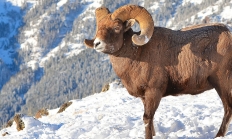
Features: California bighorn sheep are one of two subspecies of wild sheep in Oregon. They are usually smaller, with a less blocky build and smaller horns than Rocky Mountain bighorn sheep. Bighorn sheep were extirpated from the state in the 1800s. Current populations are the result of a reintroduction effort by ODFW and sportsman groups. Habitat: California bighorn sheep are the most abundant subspecies in Oregon with an estimated 3,700 found among 32 herds in central and southeast Oregon. They prefer rugged, open habitats with a good view of their surroundings. Techniques: Bighorn sheep are one of the rarest game
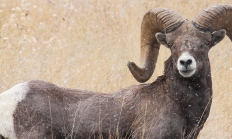


Turkey hunters should be aware of all state hunting regulations, but pay special attention to these things – all of which are listed in the table of contents of the Oregon Game Bird Hunting Regulations: Licensing and tags Shooting hours Legal hunting methods Turkey hunting opportunities The Game Bird Regulations are available both online and in print, both are organized in the same way. Licensing and tags In Oregon, all hunters older than 12 years need a hunting license. Kids 12-17 years old can buy a special, value-priced youth license that also includes fishing and shellfishing. In addition to a
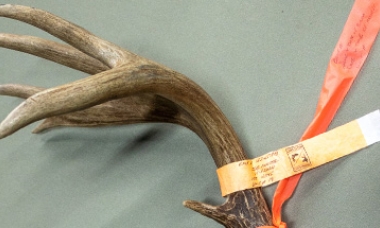

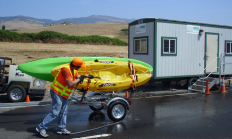

Turkeys don’t like to fly at night, so the best time to get set up for your hunt is either right before dark the day before your hunt. Or before daylight the day of your hunt. Once you ’ve located a tom, either seeing it or by hearing it gobble, it’s time to make a plan. The goal is to get close enough to call in a tom, without letting him know you’re there. Be in place before daylight If you’ve been out the night before and used a locator call to find a tom on his roost, get to
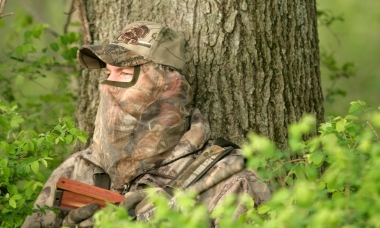
Whether you’re out the night before preparing for your morning hunt, or studying the habits of a flock throughout the year, scouting ahead of your hunt will help you find more birds during your hunt. Use optics to spot birds With binoculars or a spotting scope you’ll be able to spot and study birds from a distance without spooking them. Don't be in a hurry when watching turkeys through binoculars or a spotting scope. The birds won’t know you’re there, so take time to study the hens and toms in the flock. See if there’s a big tom you want

Regulating harvest, health, and enhancement of wildlife populations Living with wildlife Oregon's permitted wildlife control operators are an individual, business owner, or the business owner's designee charging a fee to control furbearers, unprotected mammals (excluding moles) and western gray squirrels causing damage, creating a public nuisance or posing a public health or safety concern in incorporated city limits and associated urban development areas. They are permitted by ODFW and governed by a set of rules.
